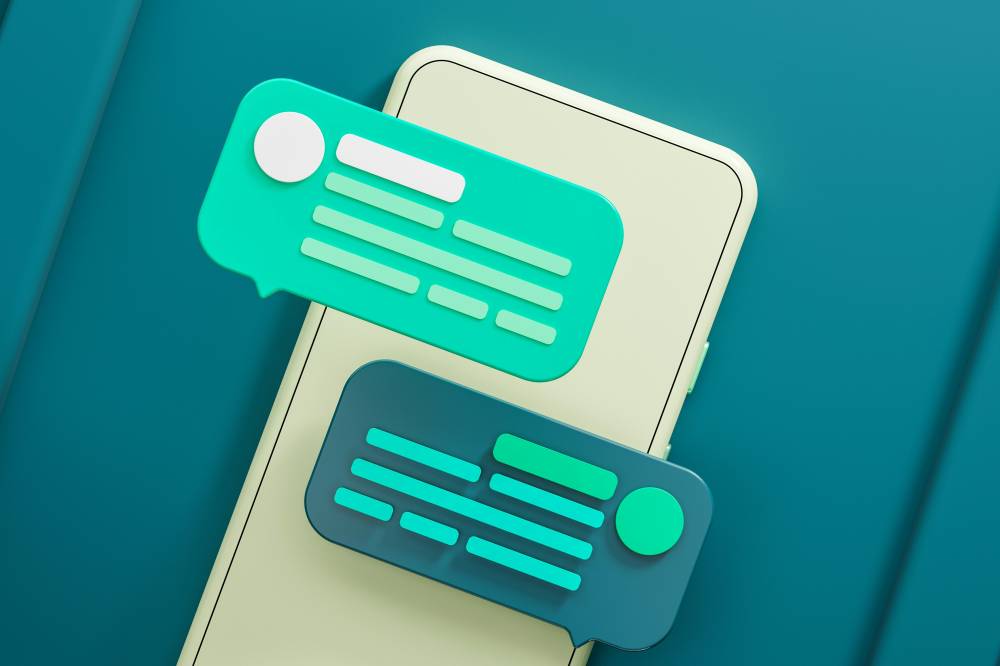The anxiety of instant connection

My stomach twists when I send the last message. I wait for hours, feeling both giddy and anxious, until the night ends with only one word staring back at me: “seen.”
While communication has never been easier, it has somehow gotten even more complicated. You send a message and expect one right away. To keep the conversation going, you have to think of something “replyable,” and once it goes dry, the only response you get is none at all.
Whether it be entering the talking stage of a romantic relationship or simply looking for a friend in a foreign environment, we become careful creatures in how we let people perceive us. We consider our next move and strategy. It is all a chess game. If you lose, where do you go next?
Connecting is made easier, yes, but making connections? More complex than ever.
The rules of the game
There are unspoken rules to messaging—an entire etiquette no one admits to following but everyone obeys. There’s the “K” or “Okay” response, which could translate to being cold or dismissive, then there’s the response time game: How many hours before you respond? Is 20 minutes too eager, or is one hour too long?
This silent choreography of digital communication becomes a power play that relies heavily on the response time. The one who is in control is the one who waits; the one who replies immediately shows more concern. This balance feels fragile. When you double-text, you look desperate. But if you stay quiet, you are forgotten.
The worst part? You have to stay “chill,” but as you anticipate their reactions, you rehearse casualness and overthink.
A few messages exchanged are enough for that day, so you prepare for the next, waiting and pretending not to care. You have to be detached enough to seem cool, but not so detached that they assume you are not interested. One wrong move and you’re left on “seen.” You self-doubt and then overthink, both before and after the conversation.
What used to be a natural exchange turns into a game.
There is now this emotional labor in messaging: You anticipate their reactions, you decode subtext, and plan responses like chess moves. You exhaust yourself in performing in a connection rather than feeling it. Social media has led us to believe that it is a sure way to form connections. On TikTok, this culture of hyper-analyzing replies has even become content: “How to text back without looking desperate,” or “What your message tone says about you.”
It feels as if we can’t be ourselves openly, or else we face rejection.
Loneliness in the age of accessibility
Accessibility comes with the pressure to be constantly available to other people. A particular image or portrayal must be kept to somehow maintain these relationships. And the moment you decide to disappear, the fear of missing out (FOMO), of not being in the know, creeps up. It makes you anxious not to be there, and it can make you feel lonely.
Being surrounded by endless messages and notifications, and having to play the right game, threatens the very essence of expression. The pressure to curate ourselves often leaves us feeling unseen and unheard, despite the constant back and forth with other people. In hindsight, conversations are present, but the connection is simply not there.
Whether you actively use social media through interactions or passively through mindless scrolling, that feeling of loneliness will be present. We turn to social media for validation, but sometimes it only feeds the feeling it created.
As a result, the act of retreating from social media stems from fatigue, not out of apathy.
When you don’t know how to play
What happens now when you don’t know how to play the game? Isolation. You are ostracized, quietly excluded from the things that people bond over.
Back in high school, the only social media account I had was Instagram, and it was solely used to post photos, not for conversations. I remember sitting in class as the people around me huddled together, laughing over something from Facebook that I hadn’t seen. Their inside jokes turned into a foreign language, one ear in and out the other; I never quite understood what it was all about. I attempted to chime in, tapping the person next to me, smiling as they continued, but the silence between their laughter and mine felt heavier than it should have been.
I didn’t know the game existed back then because I wasn’t on the platform where it was usually used. When Instagram upgraded its features and allowed you to communicate similarly to how you do on Messenger, only then did I enter the game. My friends taught me not to reply right away when talking to a guy, but to wait for a while before responding. When I entered college at a time when the pandemic was just letting up, I was overthinking how to approach any person from my block. I didn’t want to seem like I was trying too hard. When I couldn’t keep up, I decided to just take a step back.
This loneliness doesn’t stem from a lack of people, but rather from being out of sync with those around you.
Redefining connection
Connection is not measured by how successfully you play the game, but by the pauses in between. The quiet moments where you can truly embrace the naturalness of human relationships are invaluable. When we start to accept that silence is not a form of rejection, but rather a comfort in knowing where this might go, we can gain a new perspective.
We can’t force it; we have to let it happen and grow on its own. We have to form our own agency and find those who fit in the puzzle perfectly. No games present, no need to calculate your next move, you are free to be who you truly are.





















